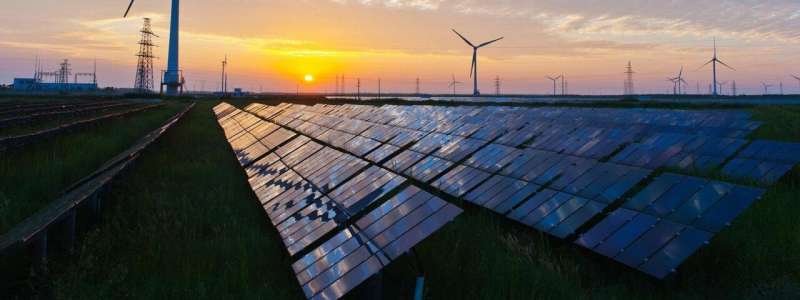Credit: Pixabay
Researchers at CU Boulder's Renewable & Sustainable Energy Institute (RASEI) on Thursday released a report outlining key steps the U.S. can take to drive carbon dioxide emissions to zero.
The report, Accelerating the U.S. Clean Energy Transformation: Challenges and Solutions by Sector, explains why urgent and comprehensive action is needed to avoid the worst impacts of climate change; describes low- and zero-carbon solutions in the electricity, buildings, transportation and industrial sectors; and presents policy options for each. It also provides an overview of technologies that have the potential to remove the high levels of carbon dioxide that humankind has already added to the atmosphere.
"The United States has less than 5% of the world's population but is responsible for about 25% of historic carbon dioxide emissions and needs to take a leadership role in addressing climate change," lead author Charles Kutscher said. "We have already experienced severe climate change impacts, including extreme storms and flooding, extensive droughts and record wildfires."
Because three-quarters of U.S. greenhouse gas emissions are the result of the burning of fossil fuels for energy, the report zeroes in on ways to transition from fossil fuels to sustainable, carbon-free energy sources.
According to Jeffrey Logan, associate director for policy and analysis at RASEI and co-author of the report, each sector contains policy options that offer practical building blocks for federal, state and local government decision-makers.
Here are some policy recommendations by sector from the report.
Electricity
- Set aggressive federal and state targets for clean electricity generation.
- Consider a carbon tax to accompany these targets, but it should not be used as a substitute for a clean energy mandate.
- Enact green stimulus in the power sector, especially for grid modernization, integration of electric vehicle charging, cybersecurity and advanced transmission interconnections.
- Federal spending should be expanded to support increased research, development and deployment (RD&D) and administrative action on topics related to achieving high penetrations of renewable power generation, including: high-resolution grid integration studies; and long-duration storage, such as hydrogen and alternative battery chemistries.
Buildings
- Maximize energy efficiency. In addition to reducing the amount of new electricity needed, this will limit the impact on utility bills and preserve resources.
- Electrify all buildings to make use of the emerging renewable electricity grid. Employ modern heat pump systems to efficiently replace natural gas. Deployment should be coupled with energy efficiency improvements and rooftop and community photovoltaic systems.
- Take advantage of building response capability to match electricity demand to variable renewable energy supply. This can be accomplished with controllable equipment, home energy management systems, home batteries and home electric vehicle charging used in conjunction with a smart grid.
- Minimize embodied carbon emissions in building materials. Both new construction materials and those used for energy efficiency improvements should be chosen to minimize emissions released in the manufacture of building materials.
Transportation
- Transition all government light-duty vehicles to electric vehicles by 2025 and legislate a national moratorium on sales and production of light- and medium-duty internal combustion vehicles by 2030.
- Adopt a progressive cash buy-back policy, especially focusing on the needs of low-income consumers.
- Promote transportation mode shifting for both people and freight prioritizing mass transit, telecommuting, walkable communities and urban pedestrian zones.
- Support the development of low- or near-zero-emission fuel alternatives for heavy-duty vehicles, including hydrogen, ammonia and selected biofuels, until such time as full electrification can be achieved.
Industry
- Given the large role for process heat in industry, electrify as much of the heating requirement as possible, including the use of heat pumps for lower temperature needs.
- Strengthen government efficiency standards for key components, such as motors and compressors.
- Strengthen the federal RD&D effort aimed at reducing the cost of renewable hydrogen production and hydrogen storage.
- Launch a federal RD&D effort in collaboration with industry to convert processes from fuels to electricity and hydrogen.
The report also summarizes the various methods for removing carbon dioxide from the atmosphere but cautions that such practices must not detract from the urgent need to stop burning fossil fuels.
Kutscher said that with solar and wind now the lowest cost sources of electricity, the U.S. and the rest of the world are already transitioning to clean energy. But to tackle climate change, these technologies must be deployed much faster.
"The good news is that committing to this clean energy transformation yields many benefits beyond addressing climate change," he said. "We can eliminate the high healthcare costs associated with air pollution, create millions of good-paying jobs, and address systemic social justice issues all at the same time."
Provided by University of Colorado at Boulder























